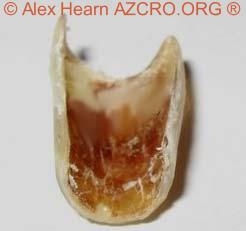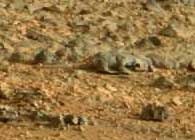Alex Hearn Faces Bigfoot
Alex Hearn and a friend found an enormous toenail in an area frequented by bigfoot. They sent it to a lab and were told that it was human. The problem is, it’s size was such that whoever it had belonged to would have to be over seven feet tall. Next, they sent it to Dr. Melba Ketchum of the Sasquatch Genome Project who got some very different results. And there the controversy began as debunkers, skeptics and deniers leaped on the story from literally every direction, questioning the study, the honesty of Dr. Ketchum, the validity of the evidence until the whole thing became a screaming maelstrom of confusion and denial.
read more

 The spring of 2013 will be the
The spring of 2013 will be the  We’ve hesitated to post about the recent ‘Mars Rodent’ photo from the Curiosity Rover, largely because a place with such a thin atmosphere, no food sources and extremely cold temperatures is just darned unlikely to have mice. However, the image has proved to be a very odd one. First, it’s large, at least three feet long, so ‘rodent’ might not be quite the right word to describe it. ‘Large lizard’ or ‘small dinosaur’ might be more appropriate. Still, no animal developed to that level of complexity is going to be running around in an environment like Mars.
We’ve hesitated to post about the recent ‘Mars Rodent’ photo from the Curiosity Rover, largely because a place with such a thin atmosphere, no food sources and extremely cold temperatures is just darned unlikely to have mice. However, the image has proved to be a very odd one. First, it’s large, at least three feet long, so ‘rodent’ might not be quite the right word to describe it. ‘Large lizard’ or ‘small dinosaur’ might be more appropriate. Still, no animal developed to that level of complexity is going to be running around in an environment like Mars.